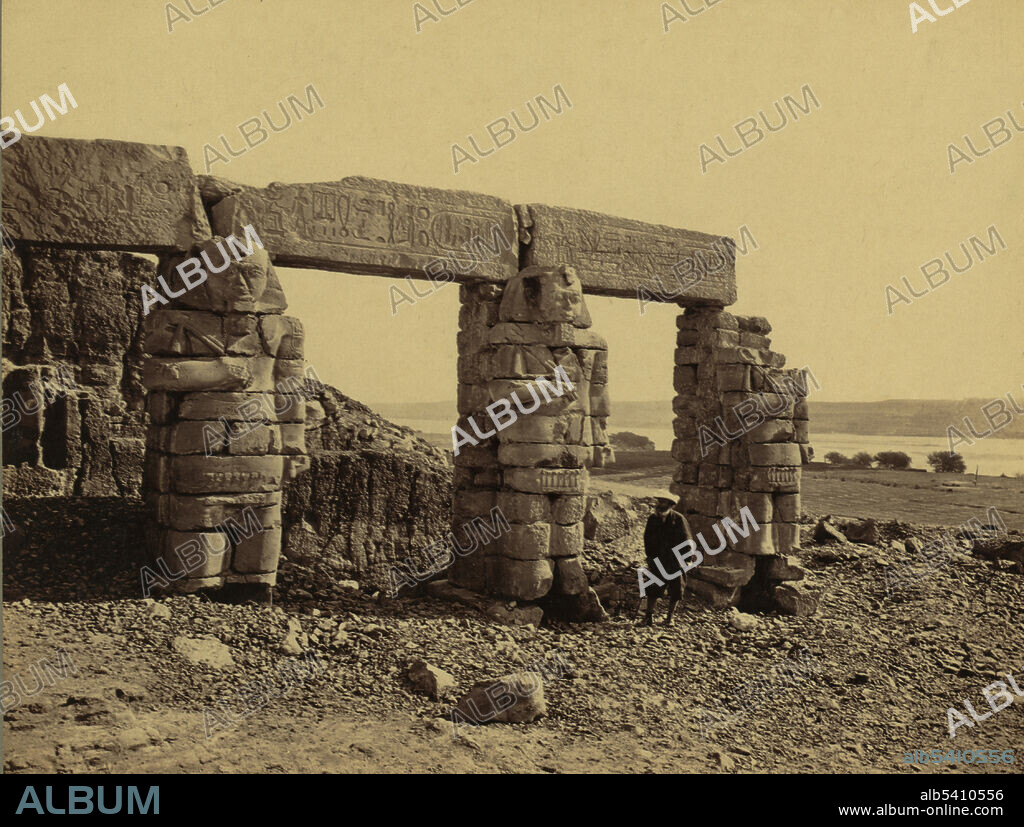alb5410556
Africa, Nubia, Temple of Gerf Hussein,1850s

|
Añadir a otro lightbox |
|
Añadir a otro lightbox |



¿Ya tienes cuenta? Iniciar sesión
¿No tienes cuenta? Regístrate
Compra esta imagen.
Selecciona el uso:

Título:
Africa, Nubia, Temple of Gerf Hussein,1850s
Descripción:
Ver traducción automática
The temple of Gerf Hussein (Per Ptah, or House of Ptah) was dedicated to pharoah Ramesses II and built by the Setau, Viceroy of Nubia. Situated on a bank of the Nile south of Aswan, it was partly free-standing and partly cut from the rock. The rear portion of the building was carved out of rock and follows the structure of Abu Simbel with a pillared hall featuring two rows of three statue pillars and four statue recesses, each with divine triads along the sides. Beyond the hall lay the hall of the offering table and the barque chamber with four cult statues of Ptah, Ramesses, Ptah-Tatenen and Hathor carved out of the rock. During the building of the Aswan dam project in the 1960s, sections of the free-standing portion of this temple were dismantled and they have now been reconstructed at the site of New Kalabsha. Most of the rock cut temple was left in place and is now submerged beneath the waters of the Nile.
Crédito:
Album / Science Source / Library of Congress
Autorizaciones:
Modelo: No - Propiedad: No
¿Preguntas relacionadas con los derechos?
¿Preguntas relacionadas con los derechos?
Tamaño imagen:
4500 x 3401 px | 43.8 MB
Tamaño impresión:
38.1 x 28.8 cm | 15.0 x 11.3 in (300 dpi)
Palabras clave:
AFRICA • ARQUITECTURA • CIVILIZACION ANTIGUA • EGIPCIO • EGIPTO • EGIPTOLOGIA • FAMOSA • FAMOSO • FOTO • HISTORIA • INDEPENDIENTE • SIGLO XIX • TEMPLO
 Pinterest
Pinterest Twitter
Twitter Facebook
Facebook Copiar enlace
Copiar enlace Email
Email
